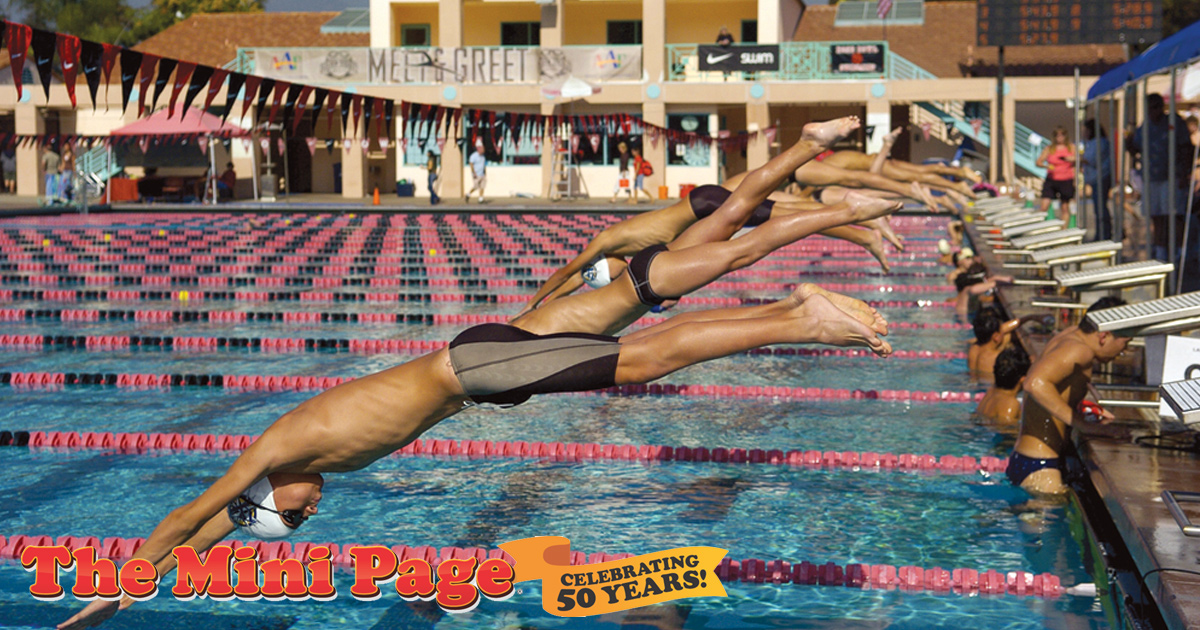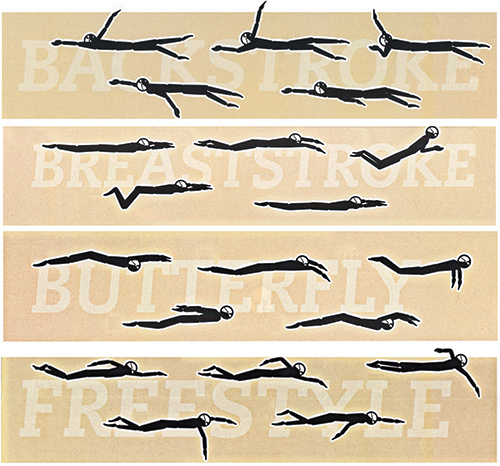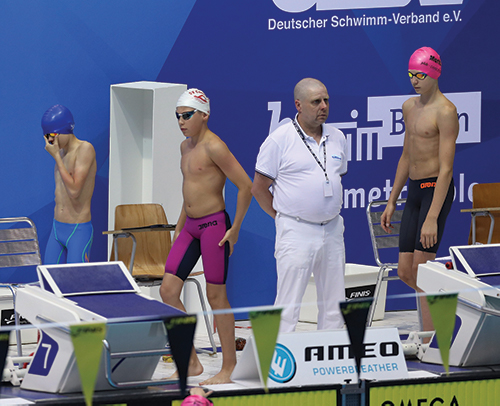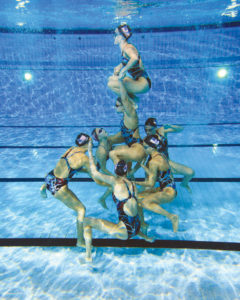
AMP | Kids is proud to announce an ongoing partnership with The Mini Page, now in its 50th year of providing engaging and fun learning opportunities to young readers across the country. This feature was originally syndicated in newspapers the week of June 22 – 28, 2019. It is distributed digitally here with permission from Andrews McMeel Syndication. Enjoy and share with the young learners in your life!
Is there a pool near your home? Does it have a swim team?
 Many kids have fun competing in organized events called swim meets. To make the team, kids should practice one or more of the four strokes: freestyle, butterfly, breaststroke and backstroke.
Many kids have fun competing in organized events called swim meets. To make the team, kids should practice one or more of the four strokes: freestyle, butterfly, breaststroke and backstroke.
More than 2.5 million kids across the United States are on swim teams at their local pool. Many are between the ages of 6 and 12. Some kids swim year-round and go on to swim in high school and college.
Young kids may participate in all events. As their bodies grow, they may find one or two events they like best.
Swim meet basics
Have you ever been to a swim meet? Events move quickly. Crowds yell and cheer on their favorite swimmers. Here are some of the things you might see at a swim meet.
Events and heats
An event features a certain stroke over a set distance. For example, a swimmer might swim a 100-meter freestyle.
If there are more swimmers than there are lanes in the pool, there will be heats. If there are 12 swimmers in the 100-meter freestyle but only 10 lanes, there might be two heats of six swimmers.
The competition
Swimmers may swim in order based on their seed times. This means that swimmers with similar times in an event will compete against each other. At some meets, swimmers are grouped by age.

photo by Marin Rulsch
The swimmers
Boys usually wear tight-fitting, short racing suits. Girls wear one-piece suits.
Some swimmers wear caps to control their hair. This also helps them to move through the water faster.
Most swimmers also wear goggles to protect their eyes from the chemicals in the pool.
The officials
At a swim meet, you may see:
- a referee, who enforces the rules and makes sure all the other officials are being fair;
- a starter, who sounds a horn or shoots a cap gun to start a race;
- a stroke judge, who watches to make sure the stroke is being done correctly;
- a turn judge, who makes sure swimmers start, finish and turn correctly.
A different kind of swim

photo by Al Bello, Getty Images, courtesy USA synchro
At some pools, you might see a team of swimmers practicing complicated routines. These athletes are called synchronized (SIN-krohn-ized) swimmers.
This graceful sport combines the skills used in dance, swimming and figure skating. Swimmers must be very strong and flexible. They must be able to hold their breath for a long time.
Synchronized swimming routines take place in deep water. Swimmers are not allowed to touch the bottom of the pool.
Routines are done to music. Swimmers learn the routine by doing it on the deck of the pool, then trying it in the water. This is called decking. Team routines are five minutes long. Individual, duet (two swimmers) and trio (three swimmers) routines are shorter.
At competition, swimmers are judged individually on their figures, or positions. That score makes up half of their final score, including their routines. Judges look to see how long swimmers can hold their breath, how high they are in the water, their posture, and how difficult the routine is.
Resources
On the Web:
At the library:
- The Science Behind Swimming, Diving and Other Water Sports by Amanda Lanser
Teachers: For standards-based activities to accompany this feature, visit Andrews McMeel Syndication. And follow The Mini Page on Facebook!
